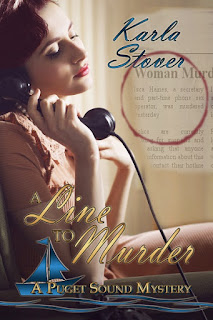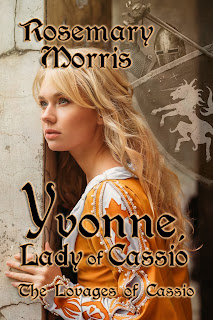About Rosemary
Morrie
I write historical romance rich in facts with themes
that the modern-day reader can identify with. Two of the themes in Yvonne Lady
of Cassio, are incompatible husbands and wives and that of an unwanted
daughter.
Recently, I converted the smallest bedroom in my house
into an office. The walls painted in the colour of pale honey, a predominantly
red oriental rug on the honey-coloured laminate floor, an 8ft wide 6ft high
waxed oak bookcase and a commodious matching desk, make it is a pleasure to write.
Previously, I kept my large collection of non-fiction books and magazines
throughout the house. Now they are all arranged in one place according to
subject.
Whenever I pause to consider what to write next, I
look out over my organic garden in which I grow herbs, fruit, vegetables and
ornamentals. Beyond it is a communal green backed by woodland.
Time spent with my family and friends is important and
I enjoy cooking vegetarian meals for them.
Early 14th Century Food
and Drink.
A friend is reading my new novel Thursday’s Child,
Heroines Born on Different Days of the Week, Book 5, set in the Regency era
prior to publication in July. The mention of parmesan ice cream served at the
famous confectioners, Gunters caused her to query the import of the cheese, not
the type of ice cream, which could not have been more unusual to the taste buds
than my experiment, avocado, chocolate, black pepper ice cream. Her question
gave me the idea for this, the first of three articles about food and drink in
the eras in which I have set my novels
Yvonne, Lady of Cassio takes place during the reign of
Edward II, King of England, from 1307 until he was deposed in 1327. At that
time, bread was everyone’s staple food but only the wealthy could afford the
best quality white bread made from wheat. Breadcrumbs were used to thicken
sauces and to stiffen custards. Gingerbread was made from a mixture of spiced
breadcrumbs and honey. Cakes and buns were made from sweetened, spiced bread
dough.
Fish was an important part of the diet. It was
forbidden by the Roman Catholic Church to eat meat, eggs and dairy food on Wednesdays,
Fridays, Saturdays and during Lent. Most people ate pickled or salted herrings.
A popular garnish was fried parsley, and to make salt fish more palatable herb
and spice sauces were served with it,
Only aristocrats who hunted the wild bull, boar and
deer and could afford to eat every type of meat, and fowl which included doves
kept in cotes and pheasant and partridge. At banquets, either peacocks or swans
were dressed in their feathers, and served as a centrepiece. Every type of
small bird was also served, sometimes as many as thirty dishes on special
occasions.
Cows, ewes and nanny goats were milked. Cream, curds
and soft cheese were made in nobles’ kitchens. Possets, caudles, cream soups
and custards were made from milk and cream and cream cheese was used to make
cheesecake, similar to the delicious ones my daughter-in-law serves.
Everyone ate pottage, either thick or liquid, made with
ingredients the household could afford, meat, fresh vegetables and herbs, and
root vegetables. It could be thick or the consistency of broth and made without
meat.
Flowers such as borage, which I add to salads or
freeze in ice cubes to make a decorative addition to summer drinks, primroses
and violets were used in salads, to which pickled fruit and roots were often
added.
People were suspicious of raw fruit, which they
believed caused fever and diarrhoea, but they ate raw cherries, grapes, plums
and damsons. Wardens, hard pears, and apples were usually cooked.
However, people were no more dependent on home grown
food than I am on the herbs, fruit and vegetables gown in my organic garden,
although they did not have as wide a choice of imported food, herbs and spices
as I do.
Fresh lemons and Seville oranges were imported, so
were sweet lemon pickles. Only the rich could afford to buy imports of
currants, dates, figs, prunes and raisins which their food was filled with. The
most luxurious foreign commodity were almonds, pounded to be used as a
thickening agent, or diluted to make almond milk as a substitute for cow’s
milk, which is now available from supermarkets.
Sugar, first tasted by the Crusaders, was so rare and
expensive that it was treated as a spice and kept under lock and key – although
I did allow the wise woman, Gytha, in Yvonne, Lady of Cassio, to use some to
prepare the candied flowers she sold. And, it is worth noting that by this
period rice was served by the wealthy.
Spices were important because they masked the taste of
food past its best and added flavour to salted and dried foods eaten in winter.
Mustard and saffron was grown locally. Pepper was imported in vast amounts and
used by everyone, but they could not afford the cost of cardamom, cinnamon,
cloves, ginger, nutmeg and mace, as well as spices uncommon today such as
galingale, grains of paradise and cubebs.
Pottage
1 1/2 pints
vegetable stock.
3 medium sliced
leeks.
4 sliced celery
sticks.
¼ shredded white
cabbage.
2 sliced turnips.
2 sliced large
carrots.
4 ounces white
breadcrumbs.
A few strands of
saffron.
Salt and ground
black pepper to taste.
Bring the soup
stock to the boil. Add the vegetables and simmer until the vegetables are soft.
Stir in the breadcrumbs, saffron, salt and pepper. Bring back to the boil and
cook for 2 or 3 minutes.
Abbreviated Extract
from Yvonne Lady of Cassio
1314
“The north
wind hurled snow across the undulating downs, over the river and across the
moat covered with opaque ice thick enough to walk on. In Cassio Castle log
fires roared up the chimneys Simon of Cassio had been so proud of. Those
enjoying the New Year feast at midday on the twenty-fourth of March were glad
of the warmth.
Nicholas
sipped some clarry. The spiced wine, sweetened with honey, slid down his
throat. Delicious!”
“Sir
Nicholas, you should be cheerful at table. Why do you sigh so sorrowfully?”
asked Margaret Beaumont, the fair-haired lady seated next to him.
“Please
pardon my discourtesy.”
“What
troubles you?” Margaret asked.
“Nothing, my
lady.” Nicholas looked at their shared platter of chicken, stewed with dried
herbs, white wine and onions. He must be courteous. “May I put some rice on
your trencher? It is a rarity and looks tasty.”
“Yes, it
does, I think it is boiled with saffron and almonds. I would like some. Now
tell me if you are glum because of the king’s writ?”
She referred
to the command for the magnates and their armed contingents to muster at
Berwick on the tenth day of June.
“No, I am
not,” he replied. For certes he looked forward to training new men-arms in his
father’s contingent after his return home in a few days. He resisted the
temptation to speak of war, which might either bore her or alarm her. “Would
you like some brewet?”
No thank you,
I can’t stomach it.”
Nicholas
sniffed the delicious aroma. “This is one of my favourite
dishes.” His mouth watered as he ladled a portion of the brewet, with a
consistency between meat and onion stew and soup, seasoned with salt, pepper,
parsley and saffron, onto his side of the trencher.”
“At the high table. Yvonne accepted a piece of
marchpane, part of a subtlety in the shape of Cassio Castle made to grace the
feast.”
Novels by Rosemary Morris
Early 18th Century novels
Tangled Love, Far Beyond Rubies, The Captain and The Countess
Regency Novels
False Pretences, Sunday’s Child, Monday’s Child,
Tuesday’s Child, Wednesday’s Child, Thursday’s Child – to be published in July
2018
Mediaeval Novel
Yvonne Lady of
Cassio. The Lovages of Cassio Book One























